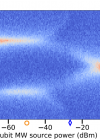EQuS is an Australian Research Centre of Excellence grouping some of the best known Australian physicists to unravel the mysteries of the quantum world. EQuS has five nodes all around Australia so you can chose to live in sunny Brisbane, bustling Sydney, or beautiful Perth. Through focussed and visionary research EQuS will deliver new scientific insights and fundamentally new technical capabilities across a range of disciplines. Impacts of this work will improve the lives of Australians and people all over the world by producing breakthroughs in physics, engineering, chemistry, biology and medicine.
The primary goals of EQuS are to
- Establish a world-leading research community driving the development of quantum technologies, with Australia as the focus of international efforts.
- Stimulate the Australian scientific and engineering communities to exploit quantum devices and quantum coherence in next-generation technologies.
- Train a generation of young scientists with the skills needed to lead the future of technology development.
- Demonstrate the potential and capabilities of engineered quantum technologies by realizing technological breakthroughs in novel and useful engineered quantum coherent systems.
- Create a design methodology supporting the development of all new technologies for the Quantum Era.
For more details see http://equs.org/


















